I couldn’t tell my story without first being truly honest with you. My volunteer experience at the Marine Mammal Center started off all wrong. It began with disappointment. Admittedly, selfish disappointment, that I now regret wasting emotional energy on.
As soon as our tour of the center (you can read more about the facility in my 1st post) ended and we were transitioning to the volunteer-shadowing portion of our day, I was pulled aside (along with another pregnant blogger participant). Word had spread of our situation and the center had concerns–legitimately so.
Because of the possibility of the animals (or the things they came in contact with) passing along unknown viruses to our vulnerable bodies, we were advised to stay away from the nitty-gritty, get-your-hands-dirty (or fishy) volunteer work.
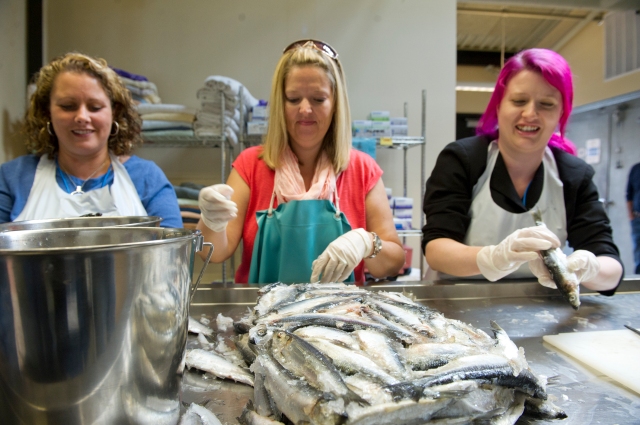
A few of my fellow bloggers sorting fish to be consumed by the marine mammals at the center. Photo Courtesy of Susan Goldman
Cleaning pens, sorting fish, preparing meals, sanitizing enclosures–believe it or not, I was really looking forward to this part! Understandably though, it just wasn’t safe, and I would have been foolish to put myself at risk. For some reason, I thought the alternative–shadowing an education volunteer–would be less satisfying, less authentic, less noteworthy, and less “getting my hands dirty”, if you know what I mean.
I couldn’t have been more wrong (and ridiculous!) in my initial thinking. Each and every volunteer at the Marine Mammal Center matters, and volunteering at the center is serious business. I know all this. I’m a teacher. The hard work of engaging, inspiring, and educating young people to live a life of conservation and stewardship is in the hands of these special individuals.
A few quick (and amazing) facts for you about volunteering at the Marine Mammal Center:
- The Marine Mammal Center has over 1,100 volunteers! There’s a 1 to 20, staff to volunteer ratio!
- Volunteers must commit to at least 6 months of service.
- Depending on the type of service (education, animal care, rescue) certain weekly or monthly time commitments are required.
- Volunteers are required to take part in extensive training in order to serve at the center.
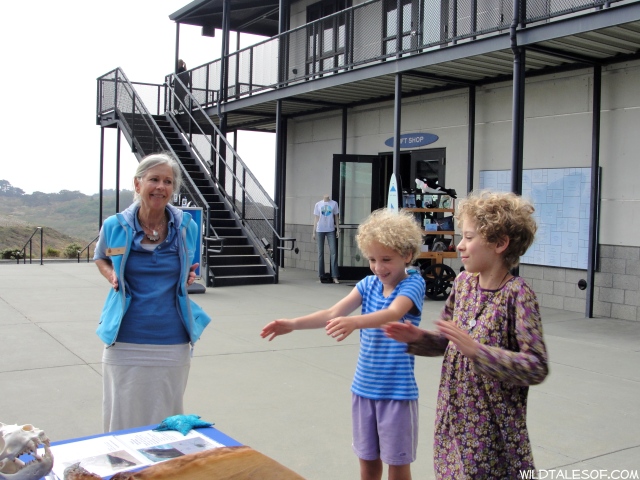
Jill teaching how to identify the difference between a sea lion and a seal. Sea Lions–long flippers, seals–short!
Jill Hayward, the education volunteer that I was fortunate enough to spend time with that day, immediately took me under wing, welcomed me to the center, and (unknown to her) set my head and my heart straight. Because of her, I gained a perspective for the center that I would not have gotten just from the tour or even from working in the food prep or cleaning areas.
She’s volunteered at the center for over 6 years, beginning her service soon after moving to the Bay area from England and now sees her time working with youth as a part of her journey and adventure in California. Jill is here for the kids, (and the animals too, of course) but her passion is, along with the environmental mission of the center, to the children and teens she works every week.
Many strategies are utilized to reach the youngsters that come and go, from tours to chats to hands-on activities, but one of her favorite ways to connect the kids to the animals and stewardship is through story. For many reasons including safety and the need to keep the animals from being socialized and therefore connected and reliant on humans, the general public (yes, including children) cannot interact directly with the marine life that the center serves.

The next best thing is a powerful collection of children’s picture books that Jill keeps on hand in order to share the the rescue, rehabilitation, and release experiences of marine life. The stories bring the process alive, and add relevancy allowing children to better connect with these environmental issues and understand why they are important.
Maybe we can’t get to know any of the current sea lions or seals being helped at the center, but we can learn a whole lot about being responsible environmental stewards through “Chippy”, a male California Sea Lion who was found over 60 miles in-land in a lettuce field. He’d endured a gun shot wound, and became quite popular not only for the miles he traveled, but also because when police came in to try to rescue him, he hopped on top of the patrol car! “Chippy” was nursed back to the health, and later successfully released back into the wild.
And thanks to Dawn and their camera crew, you get the chance to hear from Jill (and her lovely British accent) as I talk with her about how her volunteer journey began and what it’s like to experience an animal release.
Yes. Each and every volunteer makes a difference.
Wondering how you can make difference? Refer to my first post in the #DawnDayintheWildlife series, and also stay tuned! Next month I’ll share more about the rescue and release process and what we can do help.
Disclosure: A very special thank you to the folks at Dawn for making this experience possible and for sponsoring my travel and lodging in the San Francisco Bay area. As always all opinions and ideas expressed are my own.
Come join the conversation! We’d love to have you join us on all of our adventures by “liking” our facebook page and following us on twitter! You can also keep up to date with each and every post by subscribing to the blog via email.
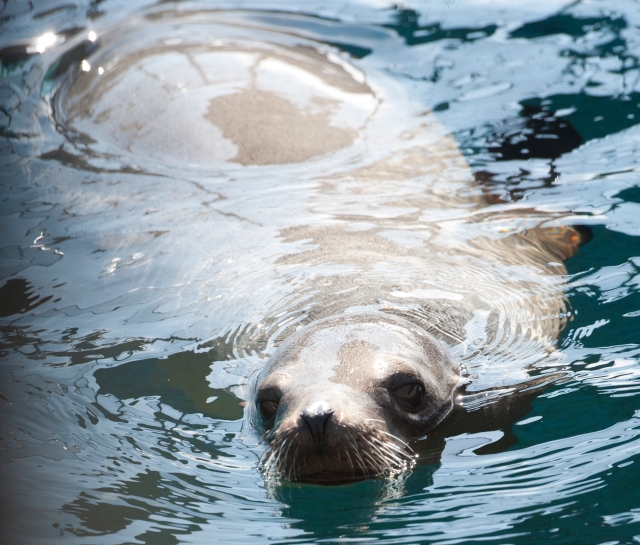
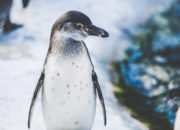 The Next Generation of Animal Responders: Teaching Kids How They Can Make a Difference for Wildlife
The Next Generation of Animal Responders: Teaching Kids How They Can Make a Difference for Wildlife 2016 Gift Guide for the Travel and Outdoor Loving Dad
2016 Gift Guide for the Travel and Outdoor Loving Dad 2016 Holiday Gift Guide for Outdoor and Travel-Loving Kids
2016 Holiday Gift Guide for Outdoor and Travel-Loving Kids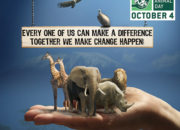 World Animal Day: 25 Things Families Can Do to Improve the Lives of Animals
World Animal Day: 25 Things Families Can Do to Improve the Lives of Animals
This is awesome. It makes me want to start volunteering. What a great experience! (Also, you were great in the video!)
Awww, thank you for the kind words! Yes, I’ve always got the volunteer thing on my mind–just need to find the right fit for our situation and family–this past trip has really motivated me to get going!